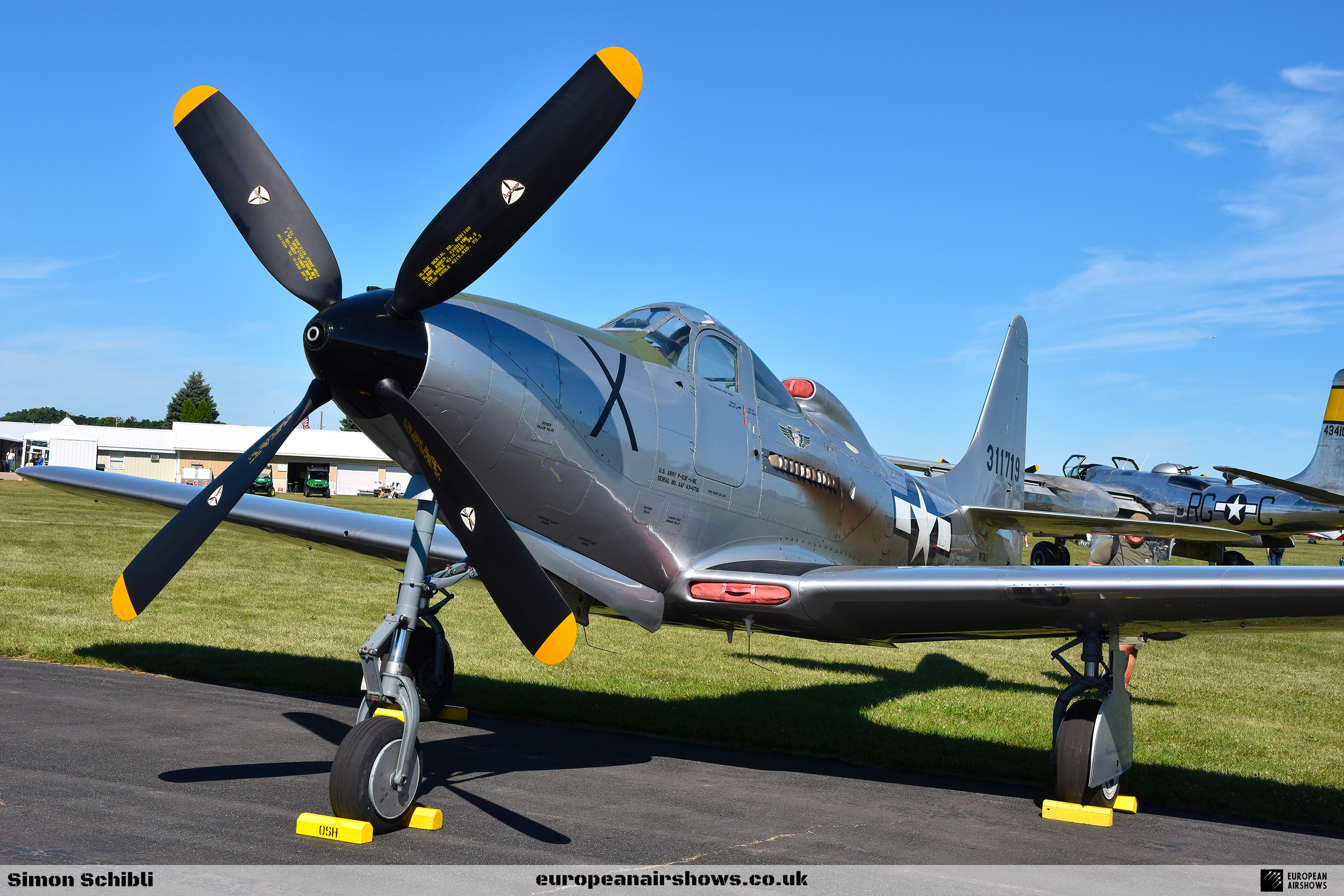
April 6 / Bell P-39 Airacobra first flight
First Flight 6 April 1938
Bell P-39 Airacobra
The Bell P-39 Airacobra is a fighter produced by Bell Aircraft for the United States Army Air Forces during World War II. It was one of the principal American fighters in service when the United States entered combat. The P-39 was used by the Soviet Air Force, and enabled individual Soviet pilots to score the highest number of kills attributed to any U.S. fighter type flown by any air force in any conflict. Other major users of the type included the Free French, the Royal Air Force, and the Italian Co-Belligerent Air Force.
It had an unusual layout, with the engine installed in the center fuselage, behind the pilot, and driving a tractor propeller in the nose with a long shaft. It was also the first fighter fitted with a tricycle undercarriage. Although its mid-engine placement was innovative, the P-39 design was handicapped by the absence of an efficient turbo-supercharger, preventing it from performing high-altitude work. For this reason it was rejected by the RAF for use over western Europe but adopted by the USSR, where most air combat took place at medium and lower altitudes.
Together with the derivative P-63 Kingcobra, the P-39 was one of the most successful fixed-wing aircraft manufactured by Bell.
In February 1937, Lieutenant Benjamin S. Kelsey, Project Officer for Fighters at the United States Army Air Corps (USAAC), and Captain Gordon P. Saville, fighter tactics instructor at the Air Corps Tactical School, issued a specification for a new fighter via Circular Proposal X-609. It was a request for a single-engine high-altitude "interceptor" having "the tactical mission of interception and attack of hostile aircraft at high altitude". Despite being called an interceptor, the proposed aircraft's role was simply an extension of the traditional pursuit (fighter) role, using a heavier and more powerful aircraft at higher altitude. Specifications called for at least 1,000 lb (450 kg) of heavy armament including a cannon, a liquid-cooled Allison engine with a General Electric turbo-supercharger, tricycle landing gear, a level airspeed of at least 360 mph (580 km/h) at altitude, and a climb to 20,000 ft (6,100 m) within 6 minutes. This was the most demanding set of fighter specifications USAAC had presented to that date. Although Bell's limited fighter design work had previously resulted in the unusual Bell YFM-1 Airacuda, the Model 12 proposal adopted an equally original configuration with an Allison V-12 engine mounted in the middle of the fuselage, just behind the cockpit, and a propeller driven by a shaft passing beneath the pilot's feet under the cockpit floor.
Bell XP-39 showing the position of the supercharger air intake
The main purpose of this configuration was to free up space for a 37 mm Browning Arms Company T9 cannon, later produced by Oldsmobile, firing through the center of the propeller hub for optimum accuracy and stability. This happened because H.M. Poyer, designer for project leader Robert Woods, was impressed by the power of this weapon and pressed for its incorporation. This was unusual, because fighter design had previously been driven by the intended engine, not the weapon system. Although devastating when it worked, the T9 had very limited ammunition, a low rate of fire, and was prone to jamming.
A secondary benefit of the mid-engine arrangement was that it created a smooth and streamlined nose profile. Much was made of the fact that this resulted in a configuration "with as trim and clean a fuselage nose as the snout of a high velocity bullet". Entry to the cockpit was through side doors (mounted on both sides of the cockpit) rather than a sliding canopy. Its unusual engine location and the long drive shaft caused some concern to pilots at first, but experience showed this was no more of a hazard in a crash landing than with an engine located forward of the cockpit. There were no problems with propeller shaft failure.



